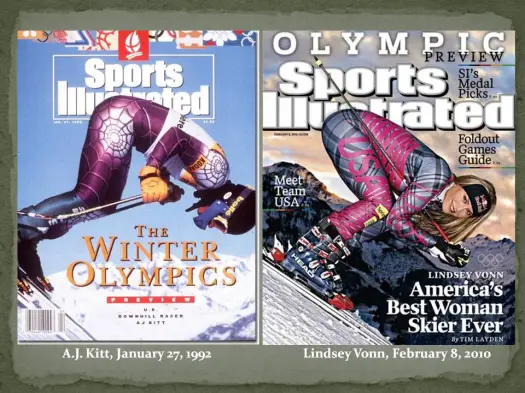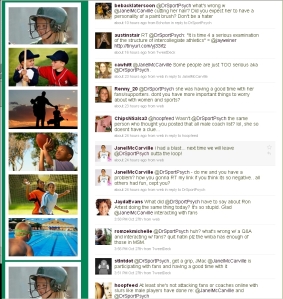As I’m watching the Men’s Final Four Final on TV, I have a few observations to share from my recent return from the Women’s Final Four in San Antonio. Both are related to Baylor’s Brittney Griner.

First, it was my week of meeting enterprising women that own their own companies. I was sitting on the Riverwalk before the semi-final games and fans of all the teams (Baylor, Stanford, UConn, OK) were filing by. There were even some lost Tennessee fans for some reason. Anyway, a couple women walked by with a great T-shirt that said “Play Like a Girl”. I had to get a picture of it, so I ran after them (see pic). The t-shirt is by SOOZN Design & Print. The shirt plays off of Griner’s ability to dunk. I asked the co-owner Susan Loftus (pictured on left with friend Jacky Howell) why make this shirt? She answered they were disgusted with the lack of t-shirts that pictured female athletes in action, that looked authentic and represented an accurate portrayal of athleticism. I thought to myself “Wow”…we need more women like this making sportswear. They were gracious enough to let me take their picture. This is a perfect example of many things: 1. women ARE sports fans, 2. many fans desperately want to see real representations of female athletes, and 3. female business owners can help create change by making products the giant sportswear makers don’t want to make, didn’t think to make, or don’t care enough to make.
The second occurrence happened while I was at the airport gate and overheard a conversation between two high school girls. These two were returning home after playing in the WBCA High School All-America Game. where one of them had met and talked to Brittney Griner. She talked for a good 20 minutes about her conversation with Griner in which she over and over again iterated how “nice” Griner was. She couldn’t believe Griner would care enough to talk to them for that long. It sounded like Griner genuinely took the time to answer her questions, and spend time with she and her teammates. It was obvious what an impression Griner made on this young woman, and I’m guessing on countless others. The girls asked Griner how she dealt with all the media attention and being accused of looking like, sounding like, and playing like a boy. Griner told them something to the affect of… “I can’t control what other people say. I just focus on myself and my basketball”. This also made quite an impression–What a great take away message! I do think Griner will help change and grow women’s basketball just as UConn has set the bar for what the future of women’s basketball will look like. Both are redefining what “Play Like a Girl” means and looks like…unapologetic athleticism.









